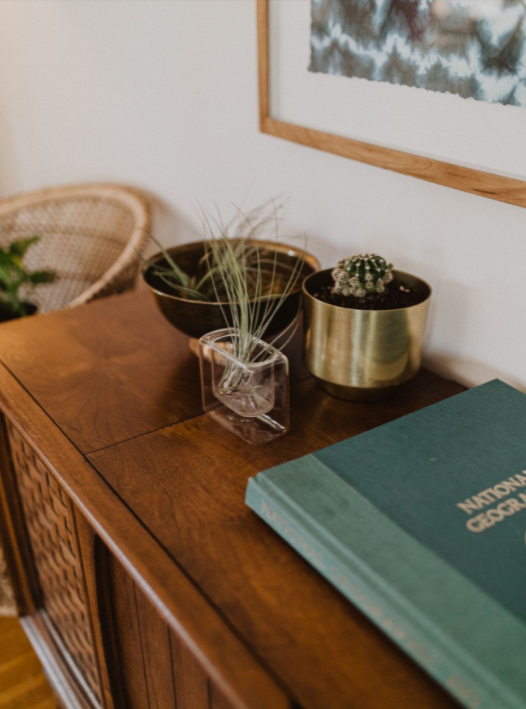When someone mentions air pollution, many people immediately think of outdoor air. However, air pollution can occur inside, too. Numerous factors can affect indoor air quality — and several of them may surprise you. Sources of air pollution inside buildings and structures include tobacco products; radon; and mold; as well as building materials and furnishings, including new flooring, upholstery, carpet, cabinetry, and furniture made from pressed wood products; household cleaning products; and outdoor sources of air pollution that flow into interior spaces, such as wildfire smoke and allergens. When the cottonwood trees along Albuquerque’s bosque and the junipers in Santa Fe’s foothills are releasing pollen, there’s little escape, even indoors.

Indoor air quality is especially important to consider because most Americans spend 90 percent of their time inside, and the concentrations of pollutants they encounter there can be two to five times higher than outside. Plus, often the people most susceptible to health risks, such as the elderly and children, spend more time indoors, whether they are the residents of the Mirehaven Active Retirement Community in Albuquerque or students attending Santa Fe High School.
Indoor air quality can greatly impact health. If there are pollutants in the air, some people can experience immediate, though somewhat minor, effects, from irritated eyes to headaches, and from dizziness to fatigue. Other individuals suffer more long-term, and serious health impacts, including infections, lung cancer, and chronic lung diseases, such as asthma. The World Health Organization estimates that nearly 4 million people annually die prematurely from illness attributable to indoor air pollution, most from improper cooking practices.

Indoor Air Quality and COVID
Amid the COVID-19 pandemic, poor indoor air quality is also impacting health by leading to the virus’s transmission. COVID-19 spreads through airborne particles when an infected person coughs, sneezes, or even speaks. In some cases, these aerosolized particles can linger in the air for hours after an infected person has left a room. The Delta variant, which, as of this writing, is the predominant strain circulating in the U.S., has proven to be twice as contagious as previous strains of the SARS CoV-2 virus. The Delta variant is also rising as kids head back to school, workers return to the office, and cooler weather is sending everyone indoors. More time inside with a more contagious variant is creating a perfect storm for COVID-19 transmission.
How to Protect Indoor Air Quality
Luckily, many of the best practices for protecting air quality in homes, office buildings, and schools help protect against virus transmission as well. Ventilation is key. According to the Environmental Protection Agency, “Inadequate ventilation can increase indoor pollutant levels by not bringing in enough fresh outdoor air to dilute emissions from indoor sources and by not carrying indoor air pollutants out of the home.”

Proper ventilation can be achieved by encouraging the natural flow of air by opening doors and windows, but that can allow more allergens inside, too. Mechanical air filtration systems can create proper ventilation without introducing additional pollutants.
Adequate ventilation decreases the concentration of viruses like SARS CoV-2 in the air, and it can be part of a multi-pronged approach to reduce transmission. According to the Environmental Protection Agency, “Although improvements to ventilation and air cleaning cannot on their own eliminate the risk of airborne transmission of the SARS-CoV-2 virus, EPA recommends increasing ventilation with outdoor air and air filtration as important components of a larger strategy.”
In addition to mechanical air flow and ventilation, UV air purifiers can play an important role in keeping indoor air high quality. UV purification is a time-tested method to sanitize spaces, including hospitals and laboratories. UV-C light inactivates airborne pathogens and microorganisms, including mold, bacteria, and viruses. UV air filters, like the Sanuvox that Aztec Mechanical installs, have a germicidal component that extinguishes biological contaminants from the air before they enter your home or office. Together, proper air flow and UV filtration can create healthy, safe indoor air quality.
How can Aztec Mechanical help?
As full-service HVAC experts for home and commercial properties, Aztec Mechanical can advise you on the best system for your structure to optimize ventilation and air flow. We know that what works in Albuquerque’s North Valley may not be the best solution for the Heights, and how the unique atmosphere of Santa Fe’s Southside differs from Downtown. We can also install from scratch or retrofit your existing system with an UV air purifier to further protect your indoor air quality. It’s all part of how we help you keep your home or business safe. Contact us to get started today.

